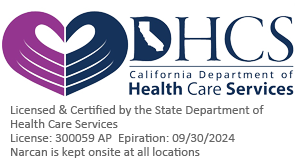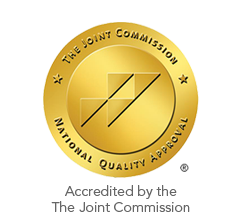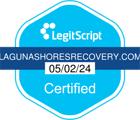Cocaine Addiction Rehab in California
Cocaine addiction can also affect a person’s relationship with their friends and family. It causes them to lose control over their use, which impacts their ability to navigate through their daily lives. As a result, many rehabilitation experts suggest seeking professional treatment for people who struggle with substance abuse.
Cocaine Use and Cocaine Addiction Statistics
According to the Centers for Disease Control and Prevention (CDC), the use of cocaine resulted in 19,927 deaths in 2020 and 24,538 fatalities in 2021.
The need for comprehensive cocaine addiction treatment services is undeniable. Professional help and rehab can help prevent cocaine abuse and cocaine-related deaths. Fortunately, Laguna Shores Recovery is a cocaine addiction treatment center that offers hope and healing to those suffering from the impact of this dangerous drug.
How is Cocaine Abused?
People abuse cocaine in a variety of ways to get high. One of the most common is to snort it through their nose. However, there are other methods of abuse, which include:
- Snorting
- Injecting
- Speedballing
- Rubbing onto gums
- Smoking crack
The duration of time to achieve a high and the time to when it wears off depends largely upon how a person uses the substance. For example, smoking or injecting cocaine causes a high that usually lasts about 5 to 10 minutes. Snorting cocaine causes a high that lasts about 15 to 30 minutes.
The Effects of Cocaine Abuse
Some of the acute or short-term effects include:
- Euphoria
- Enhanced energy
- Hypersensitivity to sound, touch, and vision
- Increased mental alertness
- Irritability
- Paranoia
Once these effects wear off, a person can experience a powerful “crash” sensation due to the sudden decrease of the substance in the brain and body. These effects can linger for several days, making a person feel tired and depressed.
The brain and body can become addicted to the higher presence of dopamine. Soon, traditional ways of increasing dopamine don’t make a person feel as good anymore. As a result, a person may start to crave cocaine as a means to increase their dopamine levels. They also start to become sensitized, meaning they may have to take larger doses to achieve the same high they once had at smaller doses. This effect creates a vicious cycle that can lead to substance use disorder.

Health Risks From Cocaine Use
As a short-acting substance, cocaine can cause tremendous damage to the body. One of the most serious complications is related to the heart. Cocaine can speed up the heart and also cause irregular heart rhythms. If a person has a history of heart health problems, this effect can be extremely damaging and potentially deadly.
Other effects of cocaine use include:
- Dilated pupils
- High blood pressure
- Increased body temperature
- Restlessness
- Tremors
- Nausea
In addition to short-term health concerns, cocaine can cause long-term health problems as well. Sometimes, these depend upon how a person is abusing the drug. For example, snorting cocaine may result in side effects that include loss of smell and even collapse of the nasal cavity. Injecting it intravenously leads to a greater risk of IV-transmitted infections. These include hepatitis and HIV.
Be Brave. Get Help.
Signs and Symptoms of Cocaine Withdrawal
- Depression
- Difficulty sleeping
- Difficulty thinking clearly
- Extreme fatigue
- Muscle ache
- Nerve pain
- Strong hunger
- Unpleasant dreams
While these symptoms are unpleasant, they are rarely deadly. A person must navigate these symptoms as a means to start their recovery from addiction.
Our California Cocaine Addiction Treatment Programs
The first step in the treatment process is often medical detox, which involves managing the physical symptoms of withdrawal under the supervision of healthcare professionals. During detox, doctors may administer medications to alleviate symptoms such as nausea, restlessness, or insomnia while the body adjusts to the absence of cocaine. This process helps ensure patient comfort and safety, setting a solid foundation for ongoing recovery efforts.
Following detox, many individuals transition into residential treatment. This intensive form of care involves living at a treatment facility for a set period, typically ranging from 30 to 90 days or longer, depending on the person’s needs. Inpatient treatment provides a structured environment free from the triggers and stresses of everyday life, allowing individuals to focus fully on their recovery.
During inpatient treatment, patients participate in a variety of therapeutic activities designed to address the root causes of their addiction. These may include individual counseling, group therapy, family therapy, and experiential therapies like art or music therapy.
Behavioral therapy for addiction is one of the most important parts of cocaine rehab. Our Southern California addiction treatment program includes various behavioral therapies that can help people through the cocaine addiction recovery process.
Individual Therapy: One-on-one sessions are extremely effective in treating substance use disorders. Individual therapy sessions involve one therapist and one person in recovery. During these therapy sessions, individuals can discuss their challenges, address their needs, and overcome personal struggles as they relate to cocaine addiction.
Group Therapy: When it comes to the addiction recovery journey, group therapy sessions can have an incredibly positive impact. Group therapy sessions involve multiple recovering individuals and one or more therapists. These sessions allow individuals to learn from the experiences of others, receive peer support, and offer support to those around them.
Support Groups: During and after treatment for cocaine addiction, support groups can continue to help provide accountability and support to those in recovery. It is essential to have peer support while recovering from addiction, and support groups are effective in providing this necessary component of recovery.
Life Skills: At Laguna Shores Recovery, we focus on equipping our clients with life skills that can help with relapse prevention and overall mental and behavioral health strategies. As individuals go through our cocaine addiction treatment program, they can also develop skills that will help them move forward after rehab.
Cognitive Behavioral Therapy (CBT): This form of psychotherapy helps individuals identify and change destructive thought patterns that lead to addiction. By learning new ways to cope with stress and avoid triggers, individuals can reduce their risk of relapse.
Contingency Management (CM): This evidence-based approach uses positive reinforcement to encourage healthy behaviors. Patients may receive vouchers or other rewards for clean drug tests, promoting a healthier lifestyle and reinforcing sobriety.
Family Therapy: While individuals undergo treatment for cocaine addiction, their family members should also receive education, resources, support, and guidance. This is where family therapy sessions come in. Family sessions help the families of recovering individuals through the healing process.
Adventure Therapy: This type of therapy unites the healing power of nature and exercise with general addiction treatment methods. Those going through cocaine addiction rehab here at Laguna Shores Recovery can overcome cocaine abuse with help from our adventure therapy services, which involve hiking, kayaking, and more!
Let Laguna Shores Recovery Help You Overcome Cocaine Addiction
Our cocaine addiction treatment center is here to help those suffering from cocaine abuse and the abuse of other substances, such as meth, heroin, alcohol, and more. We also offer dual diagnosis treatment for those suffering from addiction and co-occurring mental health disorders.
If you’ve been searching for treatment centers in California where you or a loved one can find freedom from cocaine abuse, Laguna Shores Recovery is here for you. Hope is only a phone call away. Reach out to our substance abuse treatment facility today and begin the recovery journey that will change your life for the better.


 Matthew Beck B.A, M.A, LMFT
Matthew Beck B.A, M.A, LMFT 


